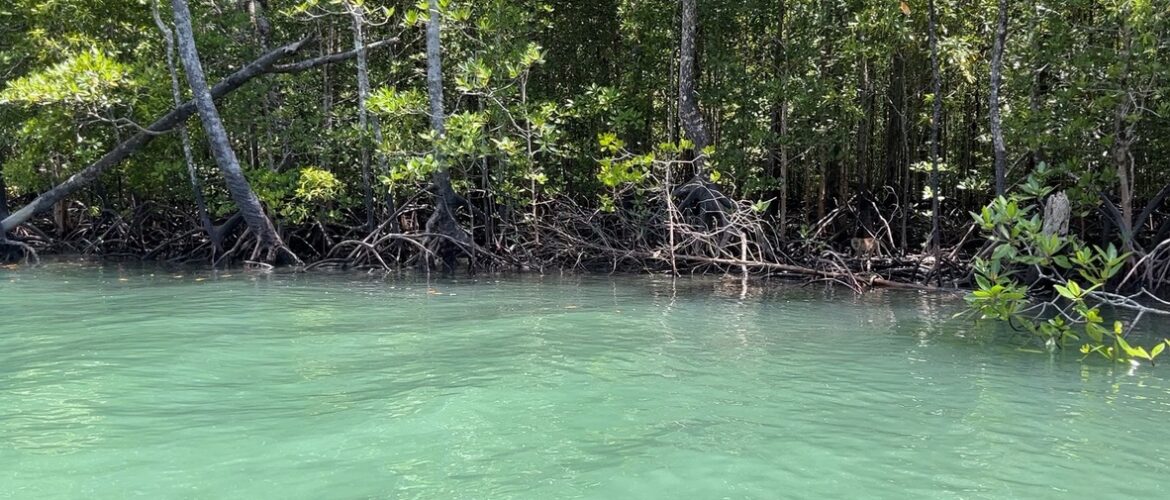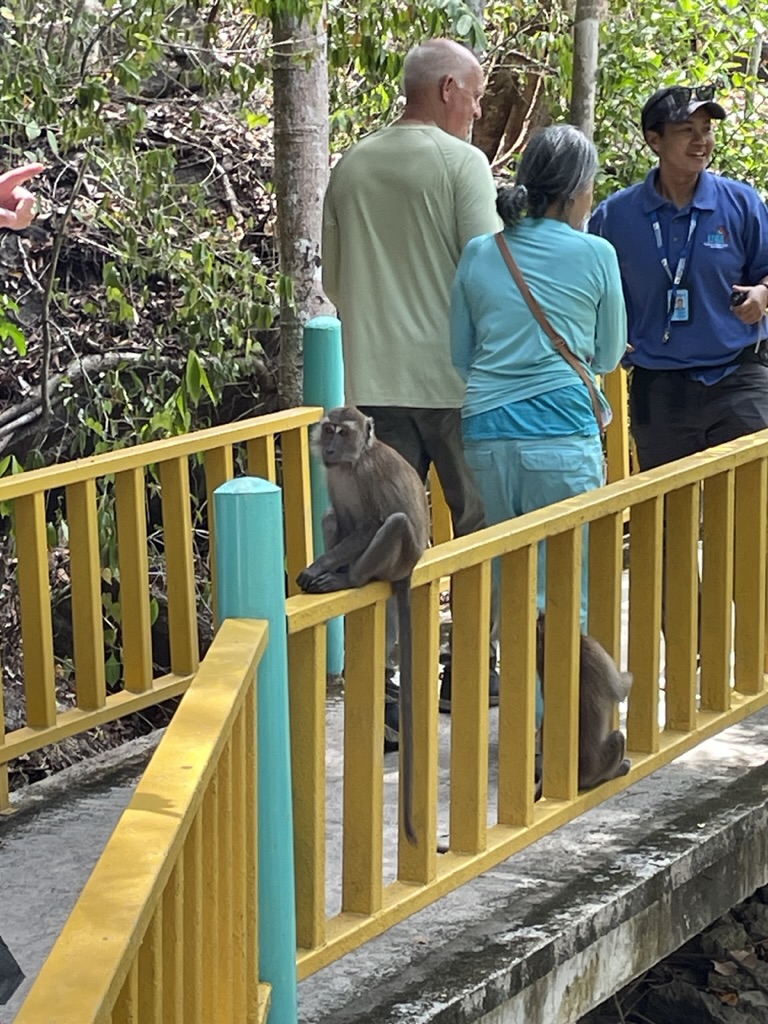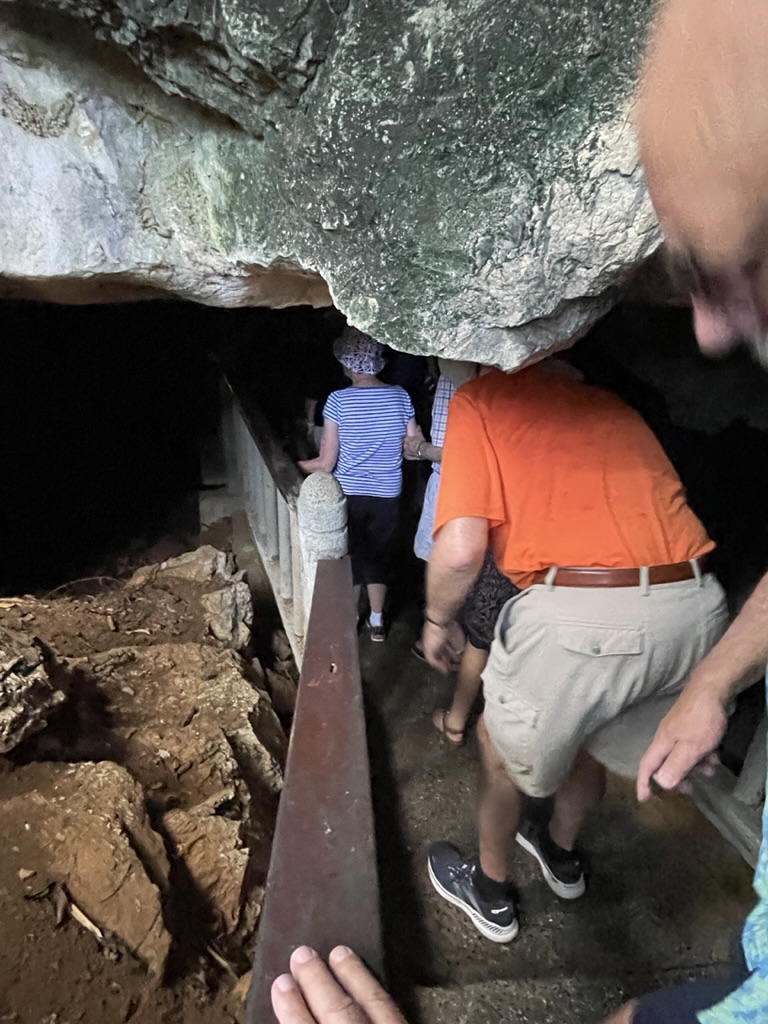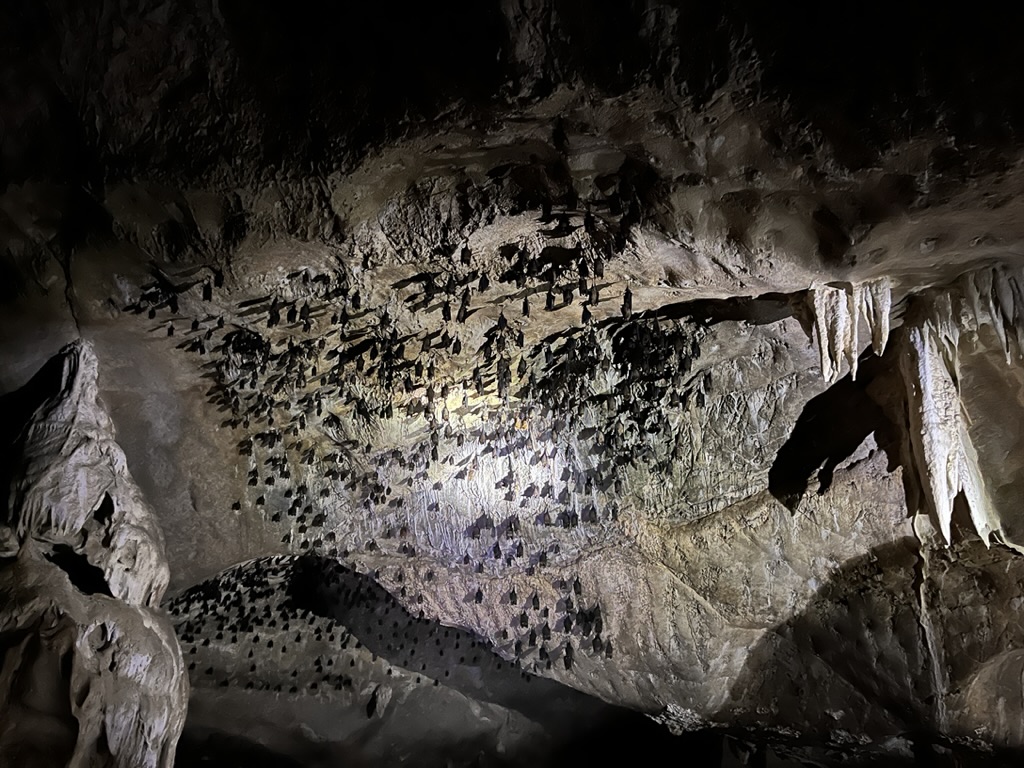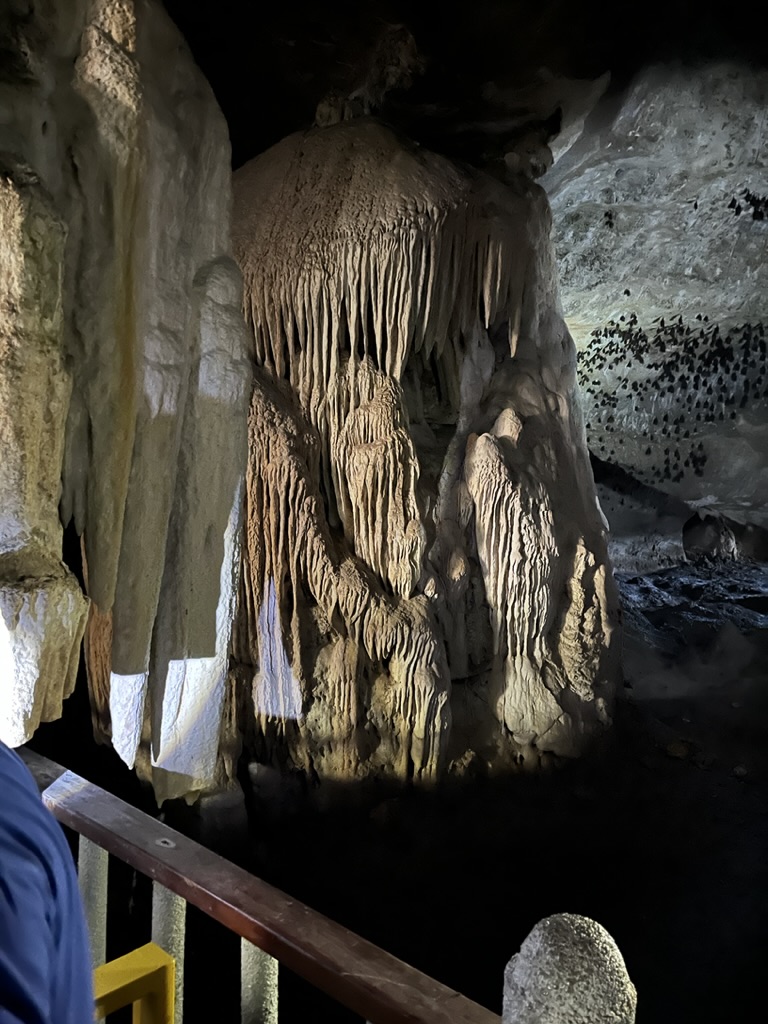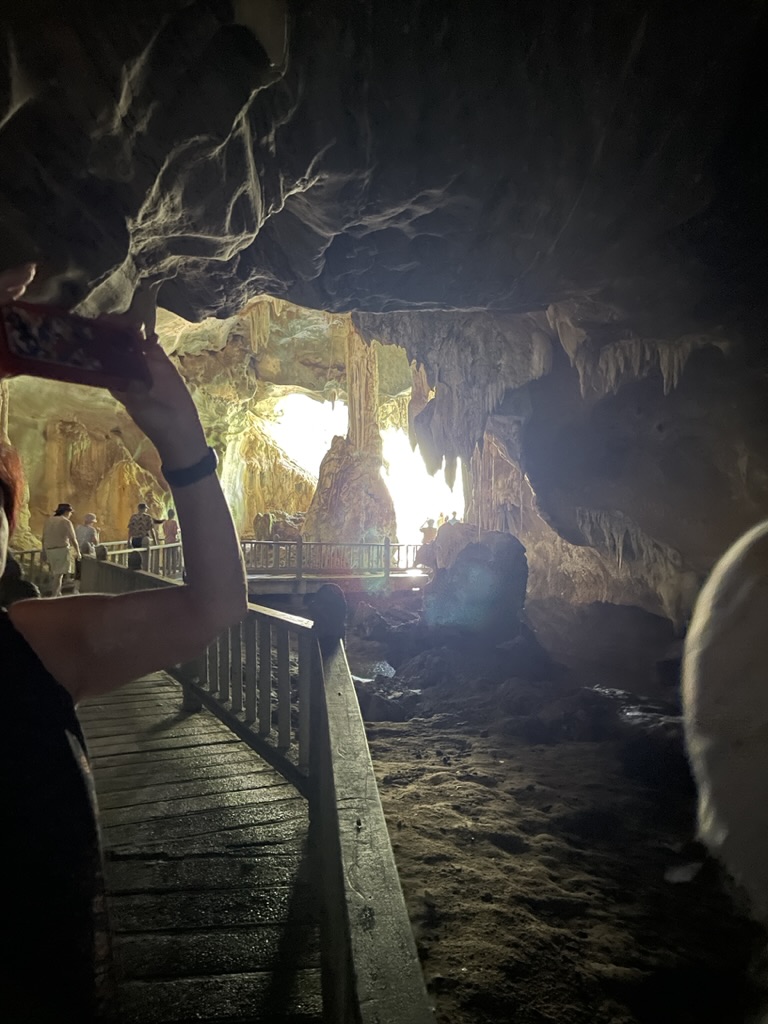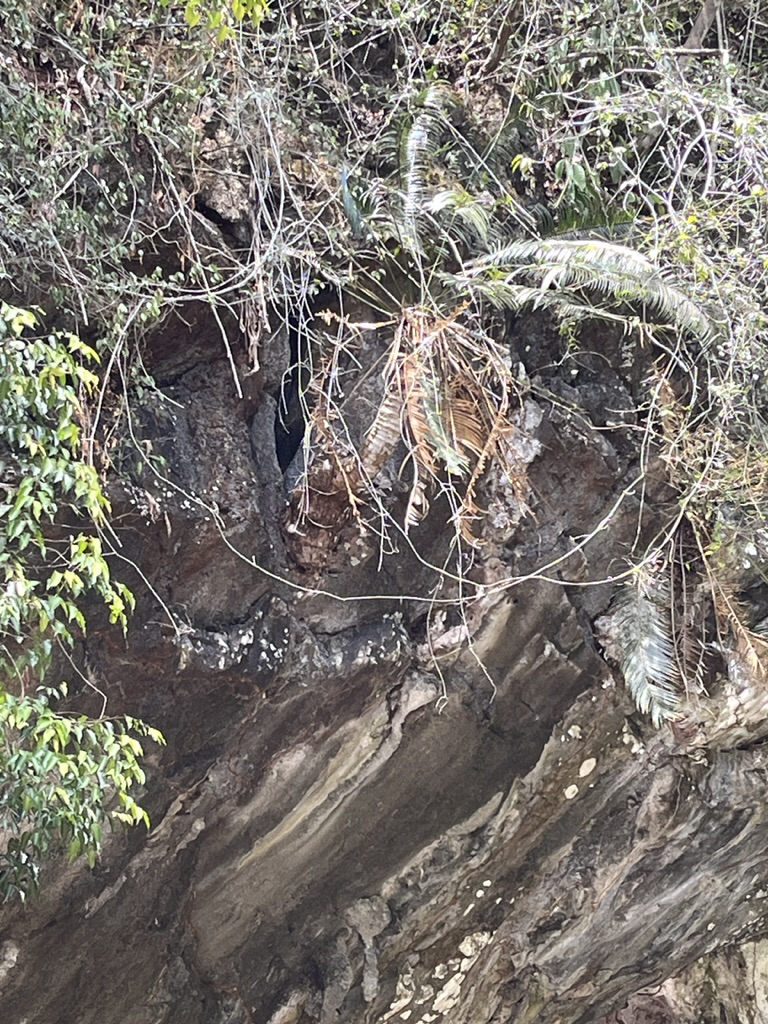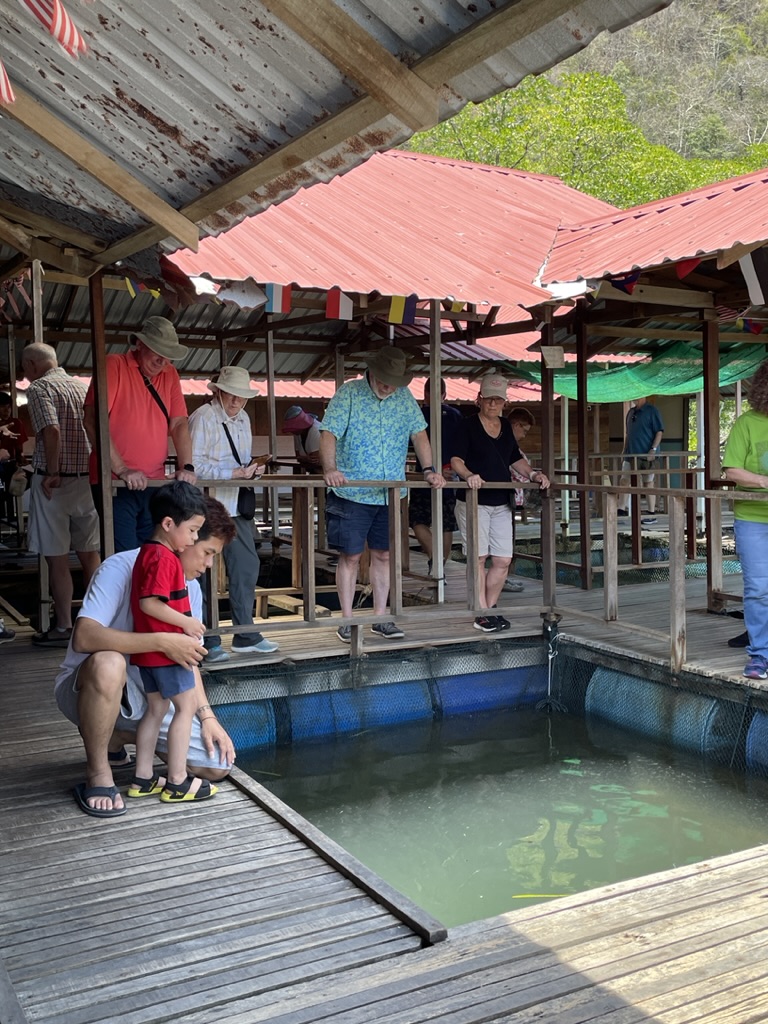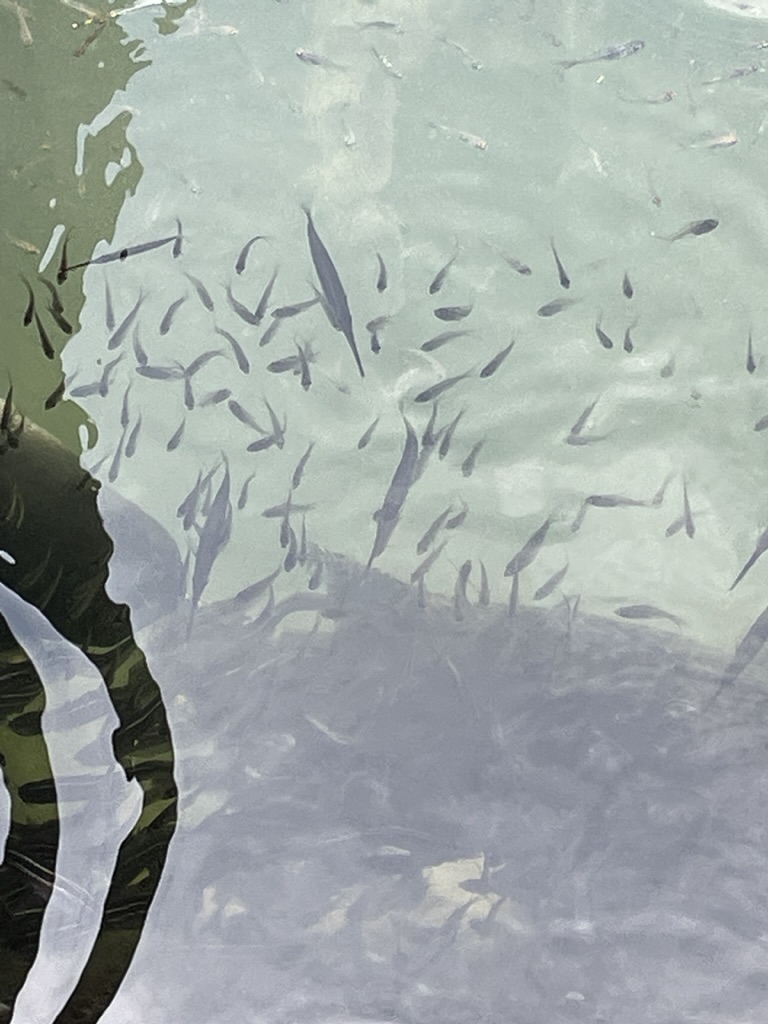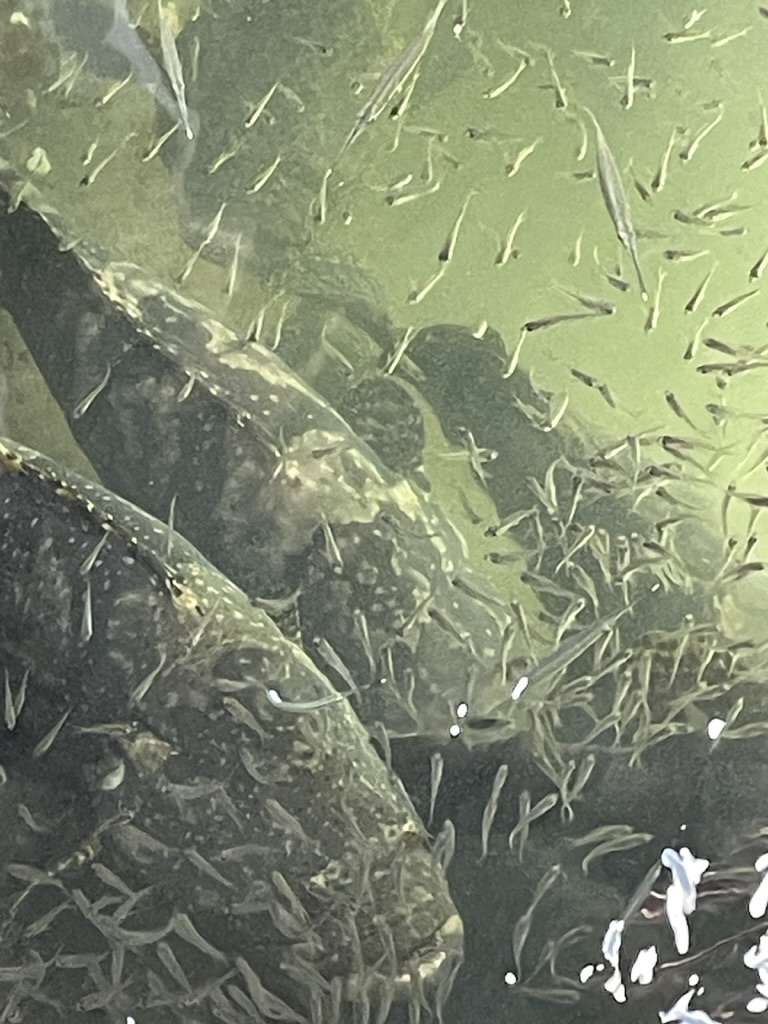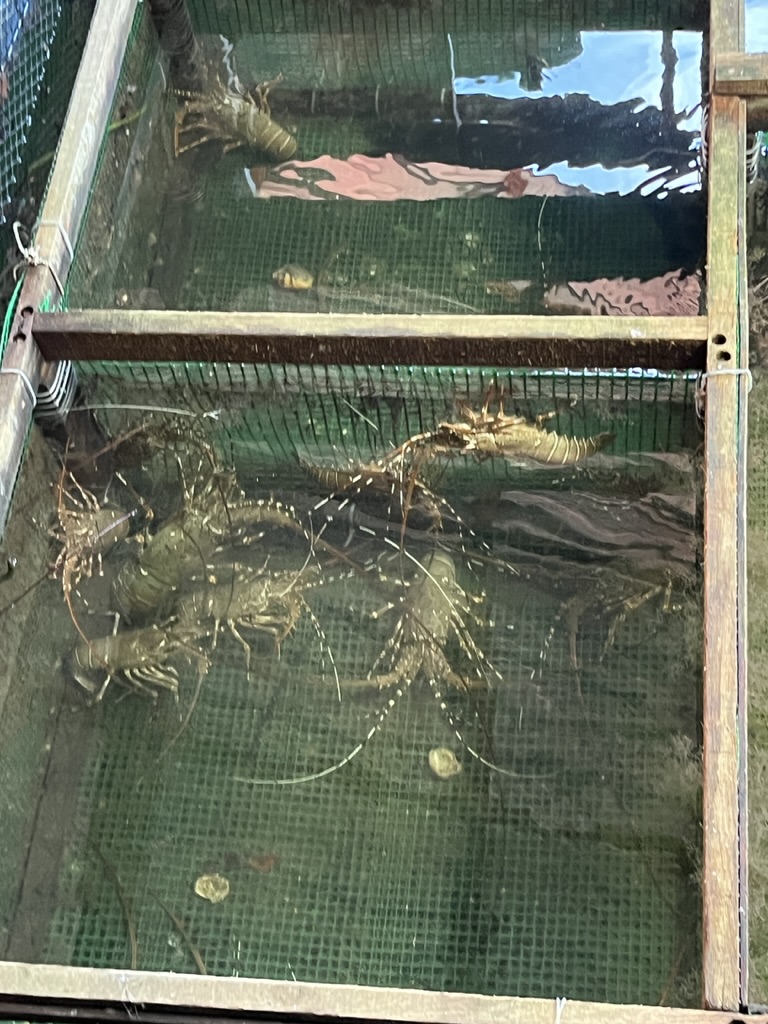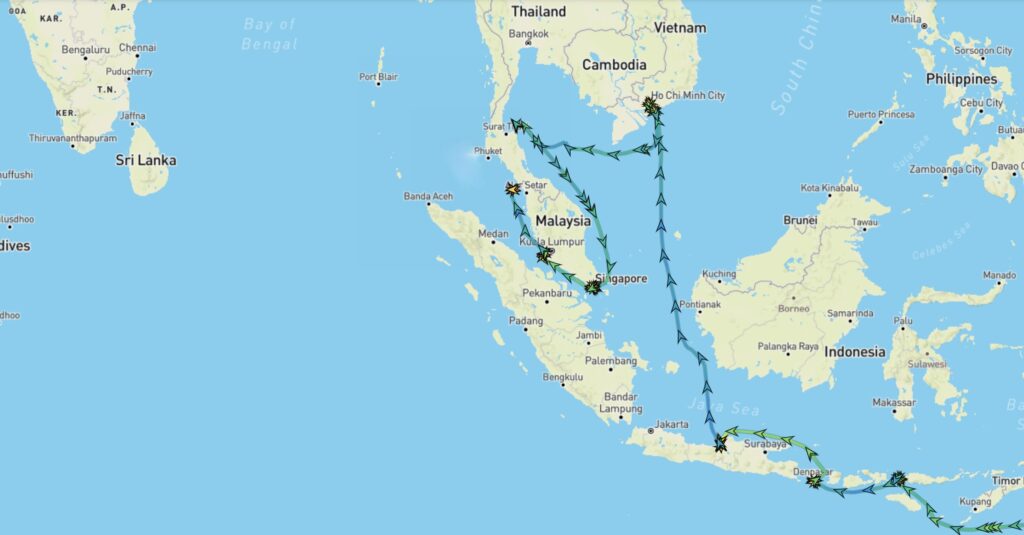
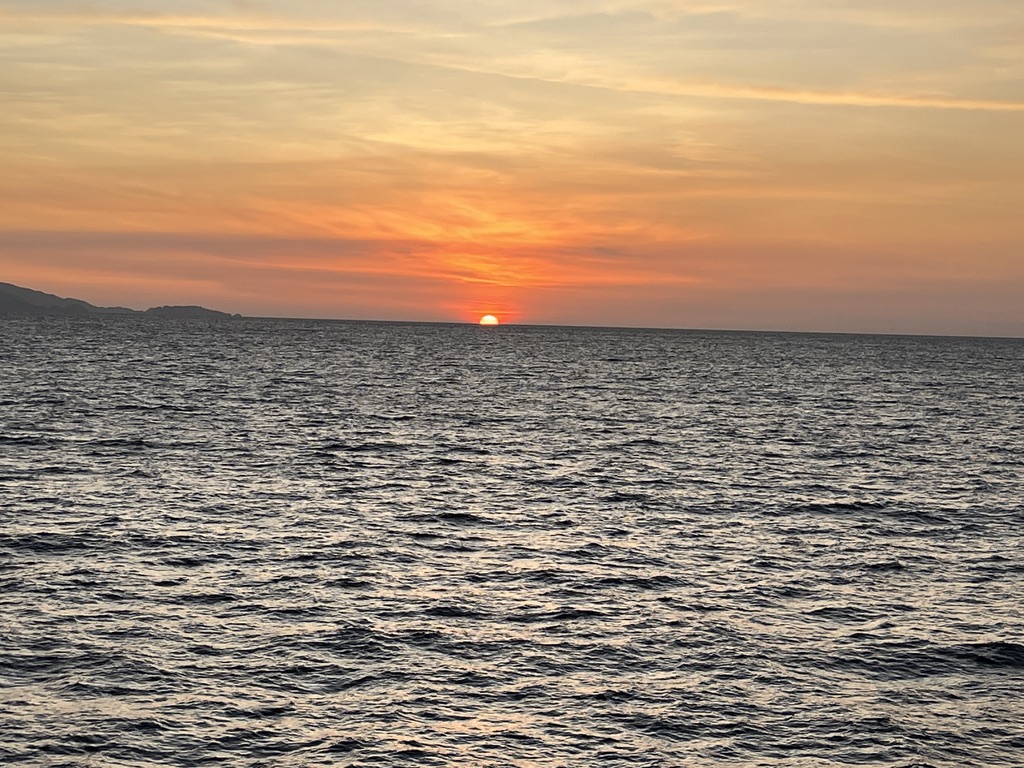
The highlight of today was a boat ride.
We tendered to shore…
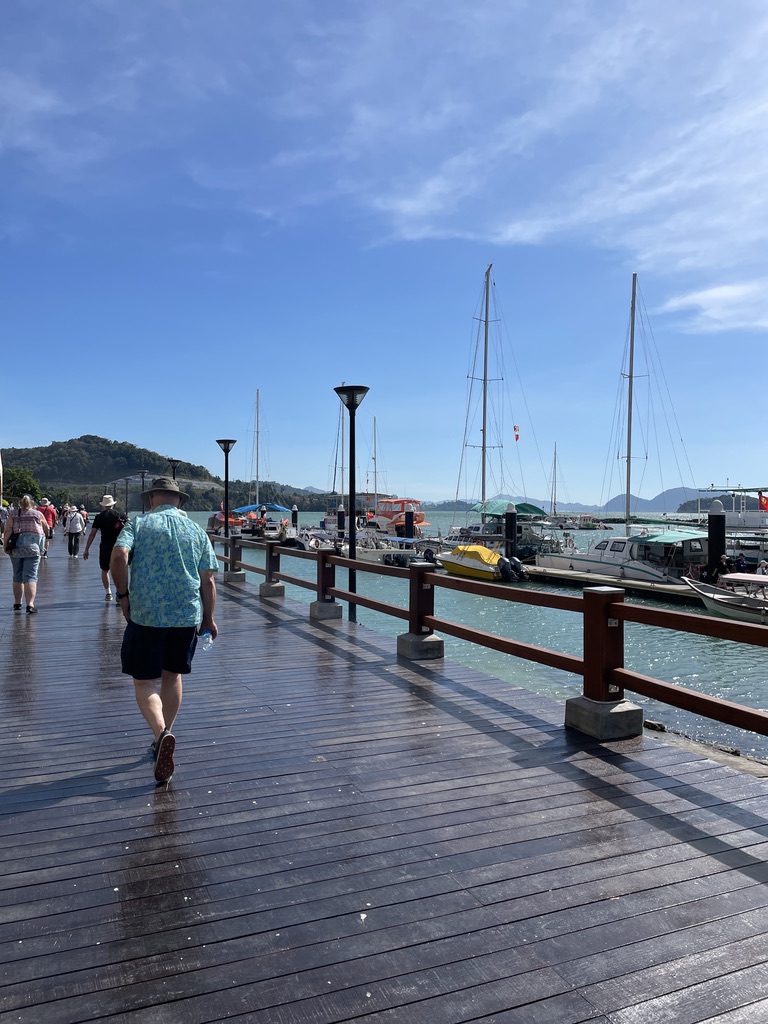
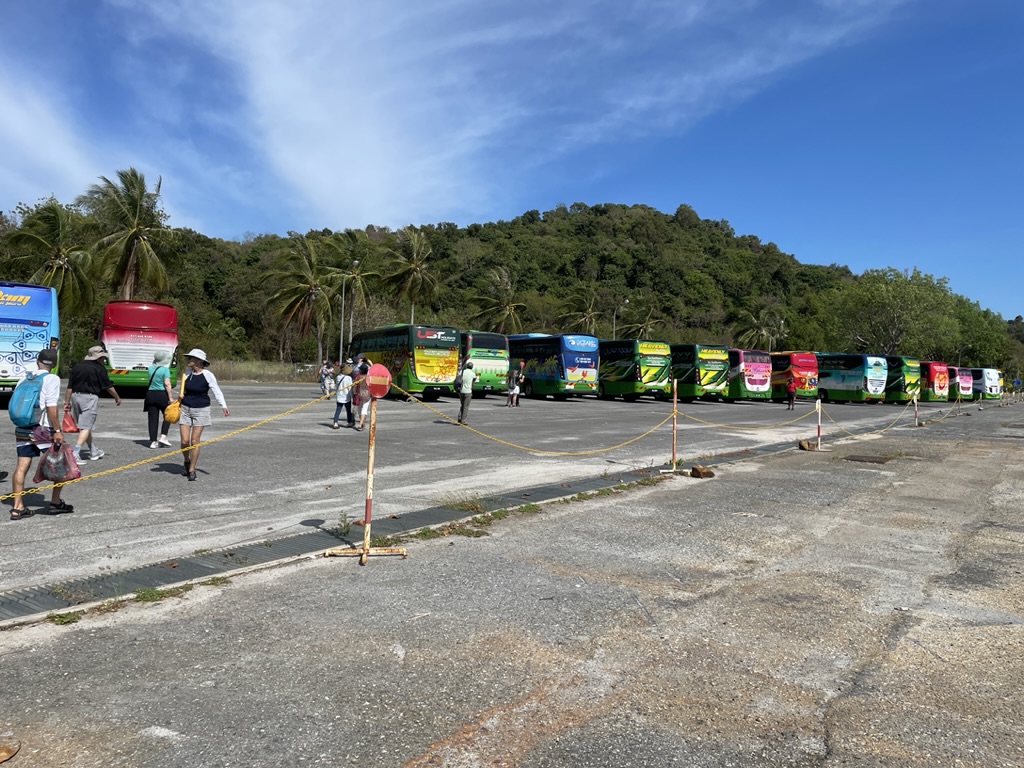
And took the 40 odd minute ride to the mangrove forest.
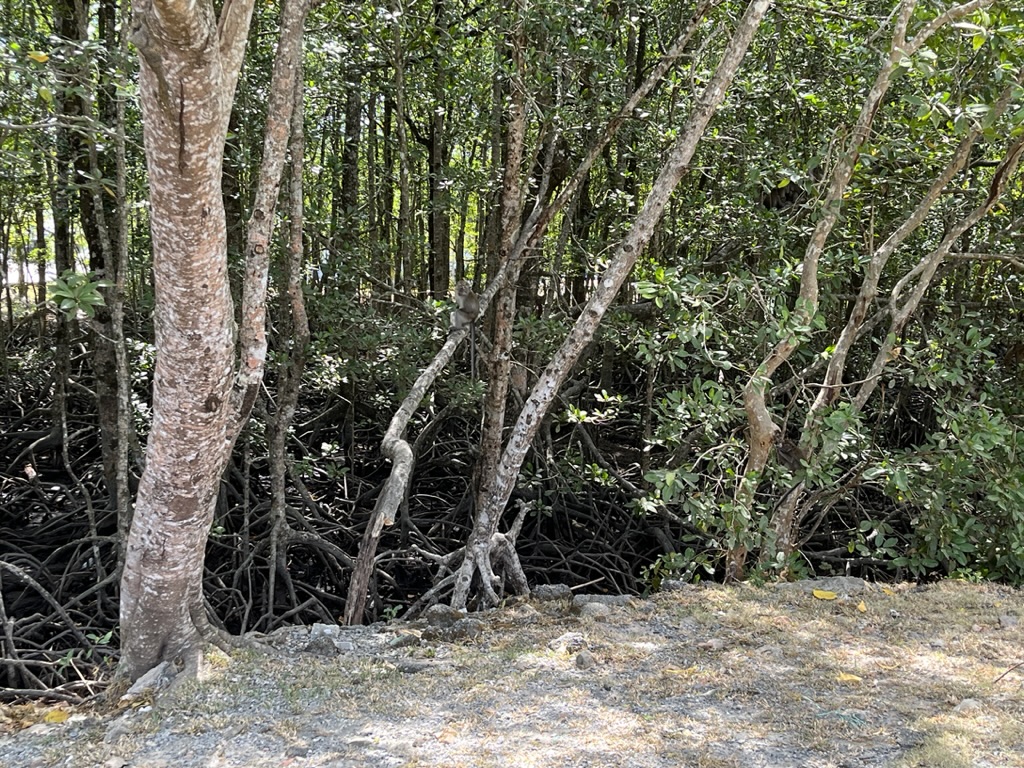
Extra bonus points if you can spot the monkey family
While some of us took a bio-break we watched another group of teenage monkeys play.
Eventually they got tired of entertaining us so we moved on to the dock and boarded our boats to check out sites on the lagoons between the islands.
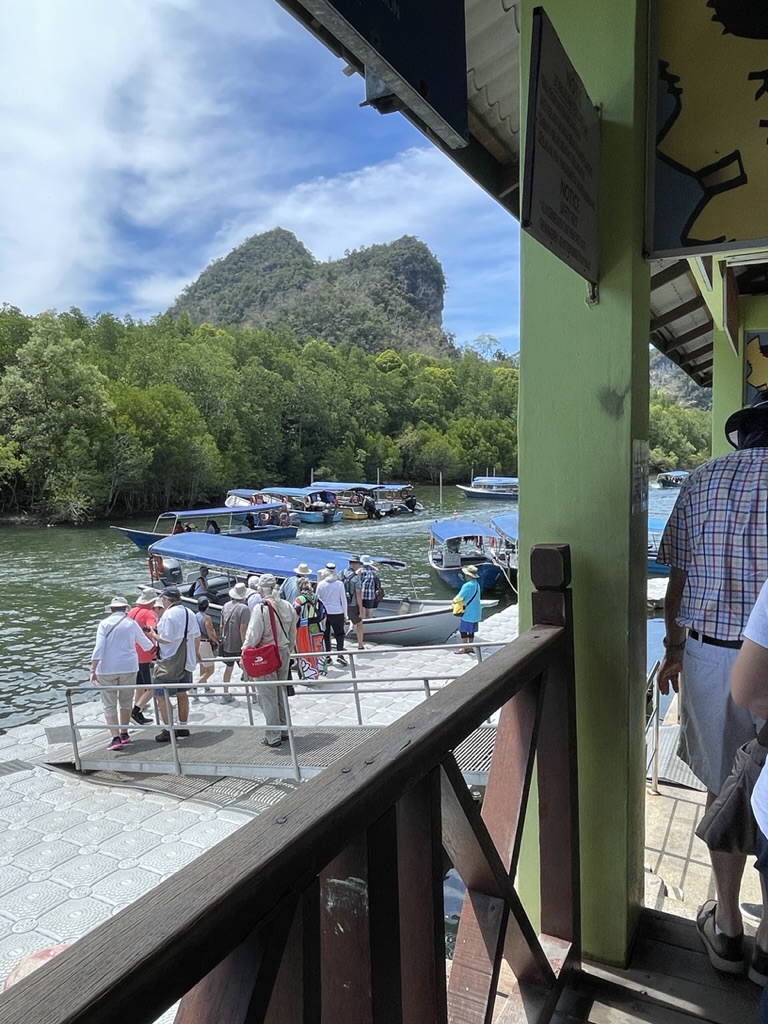
Our first stop was the bat cave – home to small insect-eating bats (they also have large fruit bats here which hang from trees during the day). Bats cannot walk on their weak legs, which is why they hang upside down to rest – if you see them hanging by two legs, they are not fully asleep yet.
Back on the boats we headed downstream at a healthy pace.
We slowed down on a couple of occasions so our guide could talk about Mangroves and the properties of a Mangrove forest.
Eventually we came to “Crocodile Cave” – so named for a rock formation on the other side of the boat (so I didn’t get a photo).
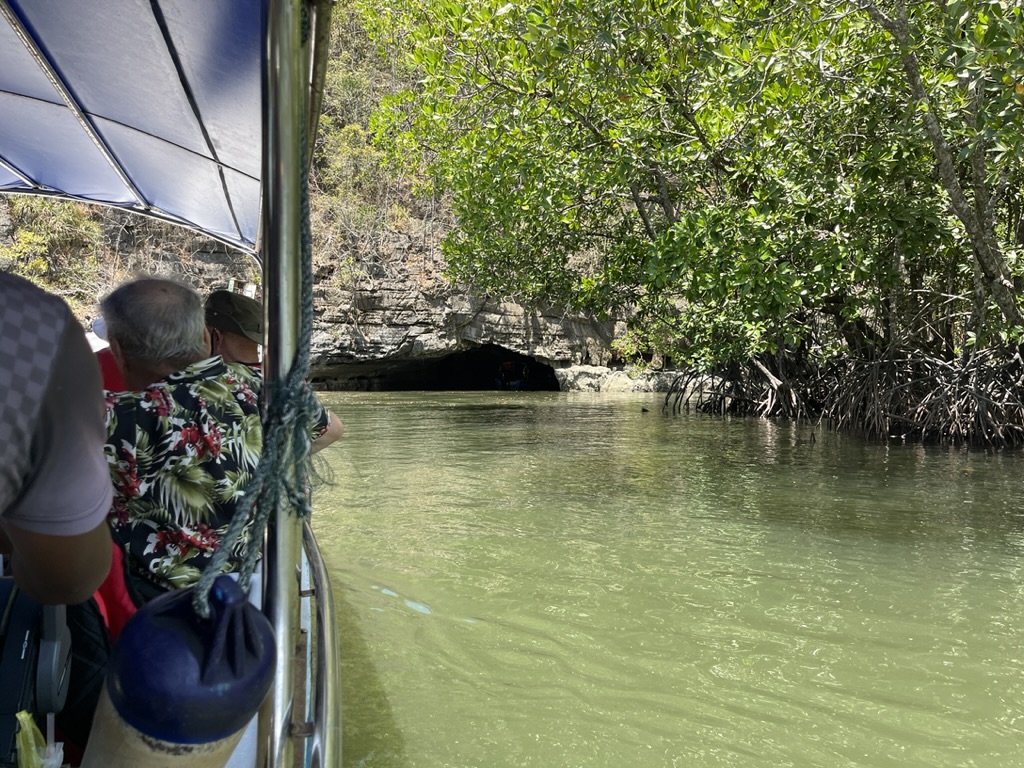
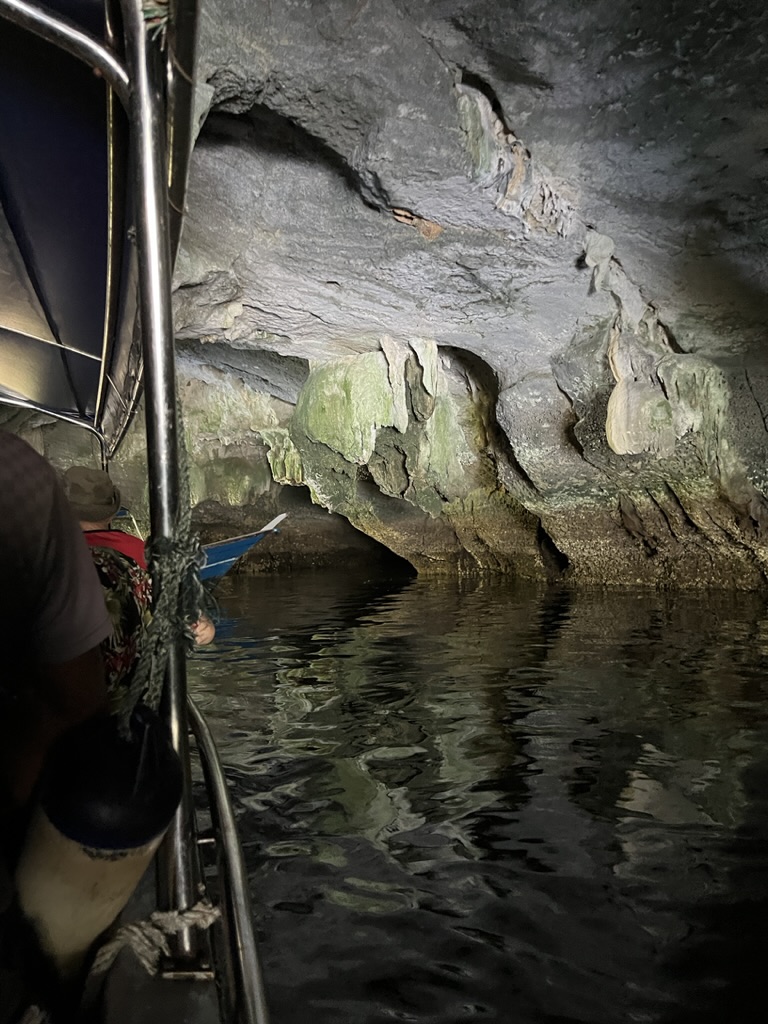
The trick is to hit the cave at the right time. (It’s really a tunnel, not a cave.) During high tide there isn’t room for the boat to fit thru. During low tide it’s too shallow for the boat to enter. We barely made it. It was pretty cool inside, though – especially when another boat came in the other entrance and they maneuvered around each other with inches to spare on all sides.
Our next stop was a fish farm – where basins were constructed of netting so the salt water could flow freely around the fish.
They had a restaurant next door. I’m guessing the lobsters were on the menu and I wouldn’t be surprised if the Grouper was as well.
Our last stop for the trip was an area known to be frequented by White Belly Sea Eagles. The guide assured us that we would probably, possibly, see an Eagle, but not to be disappointed if we didn’t. Right.
Here’s what we saw:
By way of explanation, the brown birds are Kites. We have no idea why they were swooping down, dipping their claws in the water and then flying up. It was pretty interesting. It’s also notable that the Sea Eagles (white with dark leading edges on their wings) were only circling above.
After watching these birds for a while we headed back to the dock –
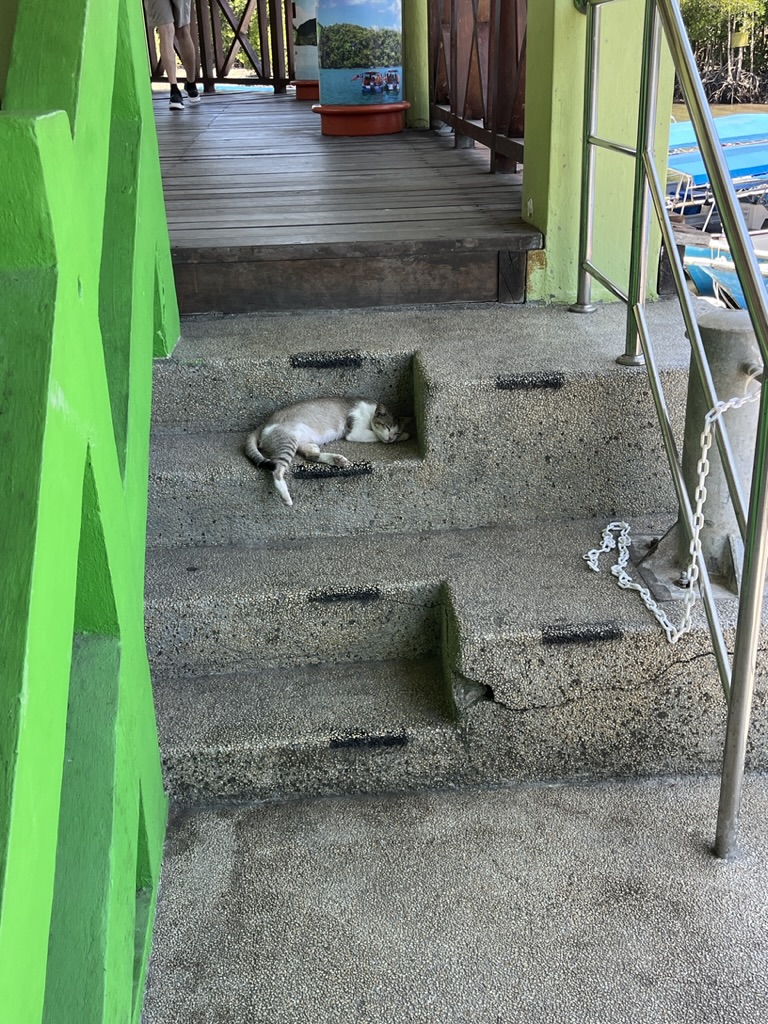
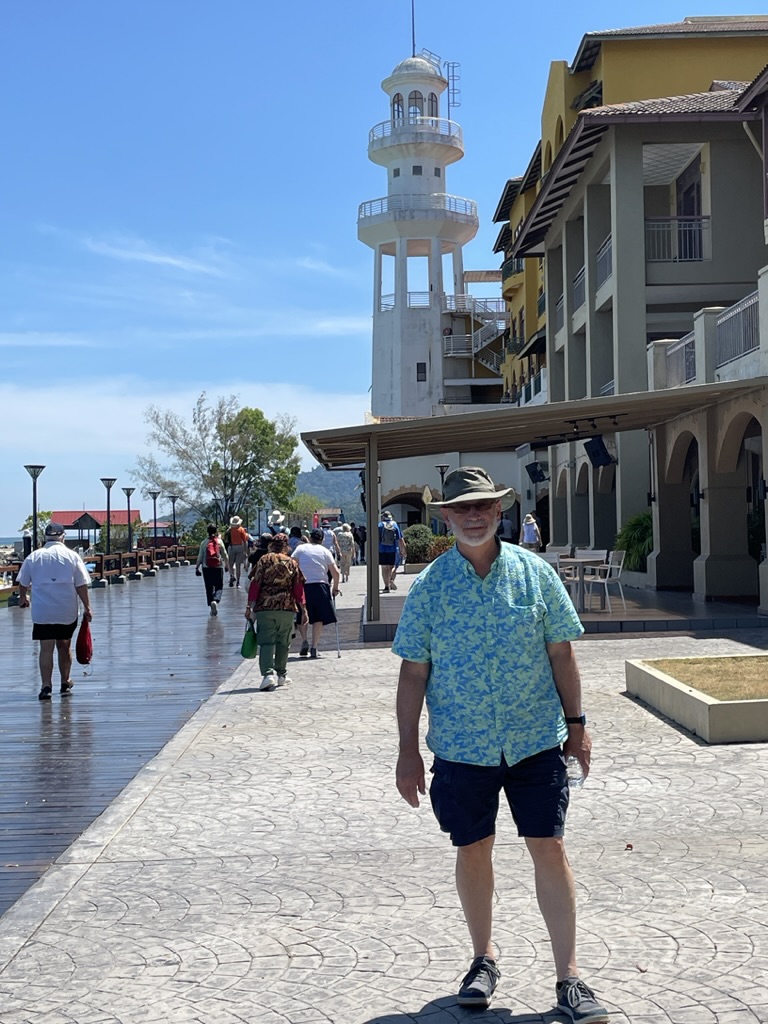
Dinner was on the Terrace…
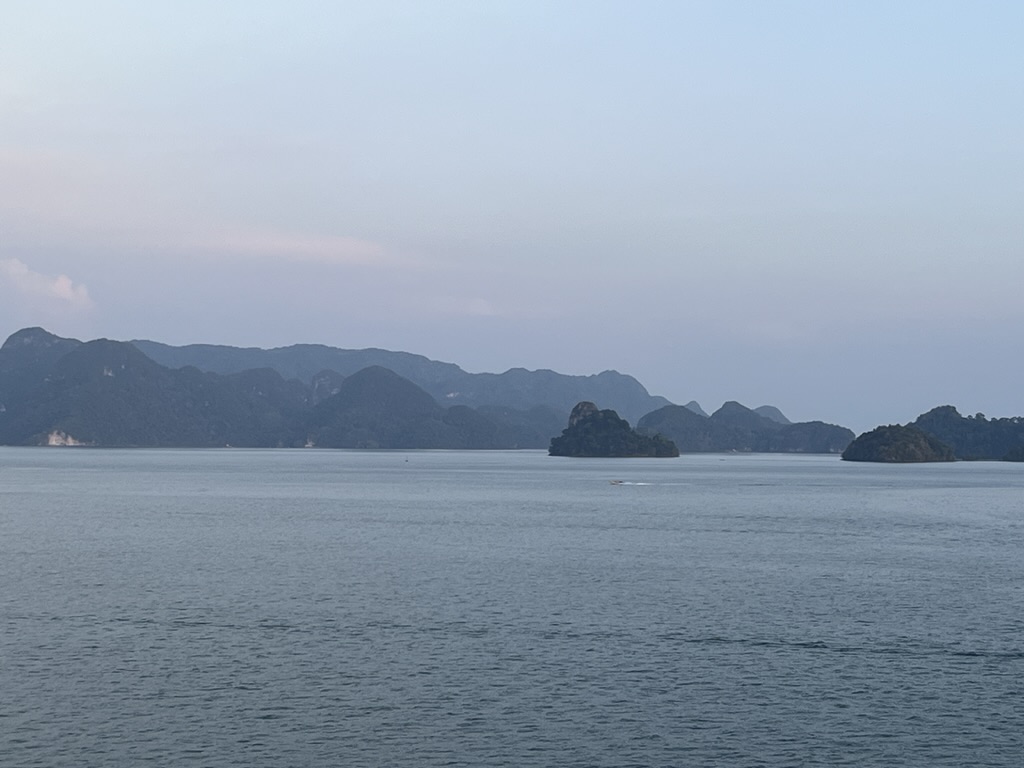
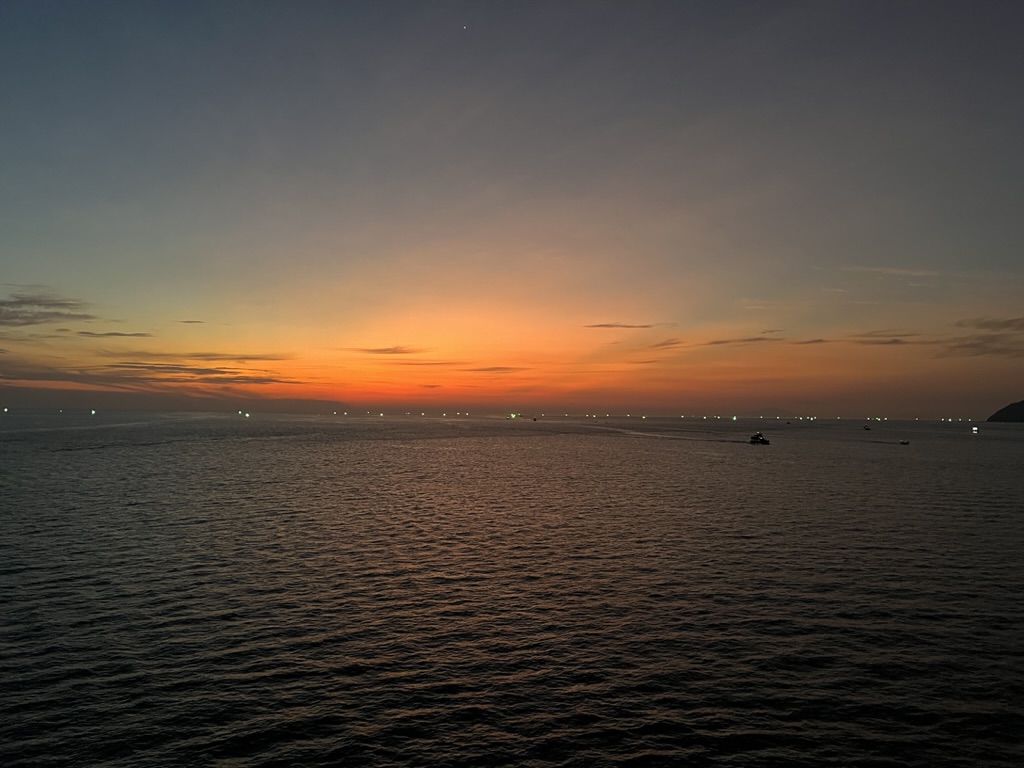
The green lights dotting the horizon are fishing boats. The green lights attract the squid.
BBB was a respectable 16 of 24, but only got us into 3rd place.
So that’s the deal with Day 87 of this adventure.
More tomorrow!
TTFN, R
Cheryl’s Factoids:
- Langkawi island is just one of 99 islands that are part of the mainland portion of Malaysia – and you can see Thailand from where we watched the White Belly Sea Eagles. (The king cobra-which can be up to 9 yards long and raise his head up to nearly 6 feet to face a human-can kill all other snakes. BUT the Sea Eagles can spot a king cobra swimming across a lagoon, catch it by the head and kill it!)
- The monkeys here are long-tailed macaques, which can aggressively take any food or drink from you (we were warned to leave any food on the boat). I saw a teenager try to get his camera phone up close to take a picture and the monkey hissed and lunged at him. They also bite.
- The mangroves are ecologically important because they can live in brackish salt water lagoons and dig their roots deep into the soil which helps buffer the island behind them from tsunamis and typhoons. They send the salt water up through the tree to a “sacrificial leaf” which collects all the salt, leaving fresh water for the rest of the tree. It then turns yellow. We saw many yellow leaves had fallen into the lagoons under the mangrove trees.
- The cycads here are 131 million years old – as are the limestone ledges that make up most of these islands.
